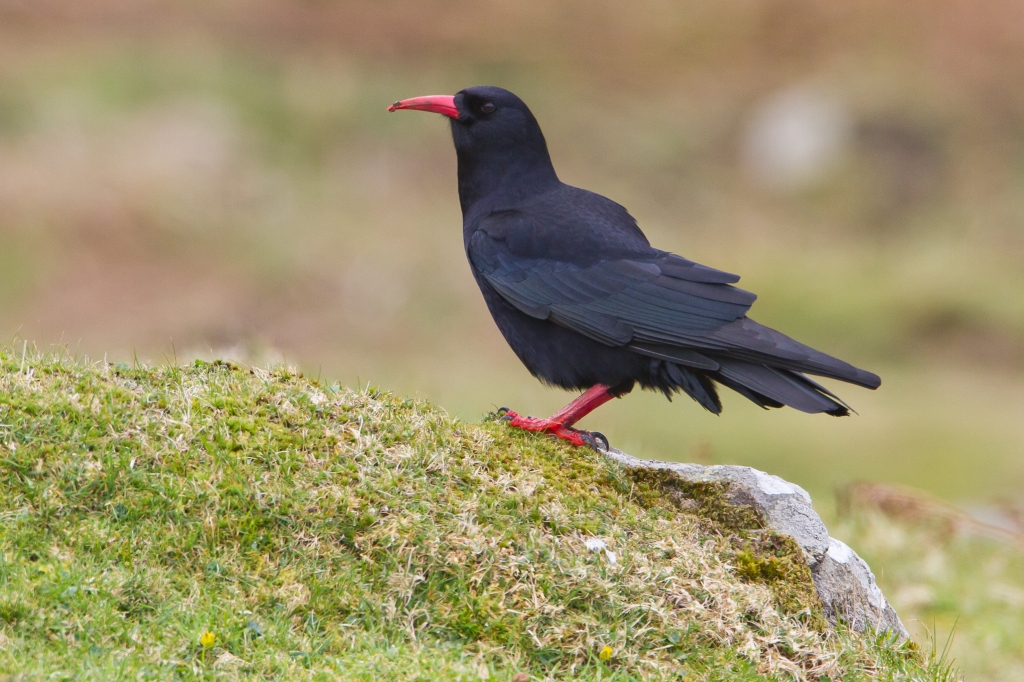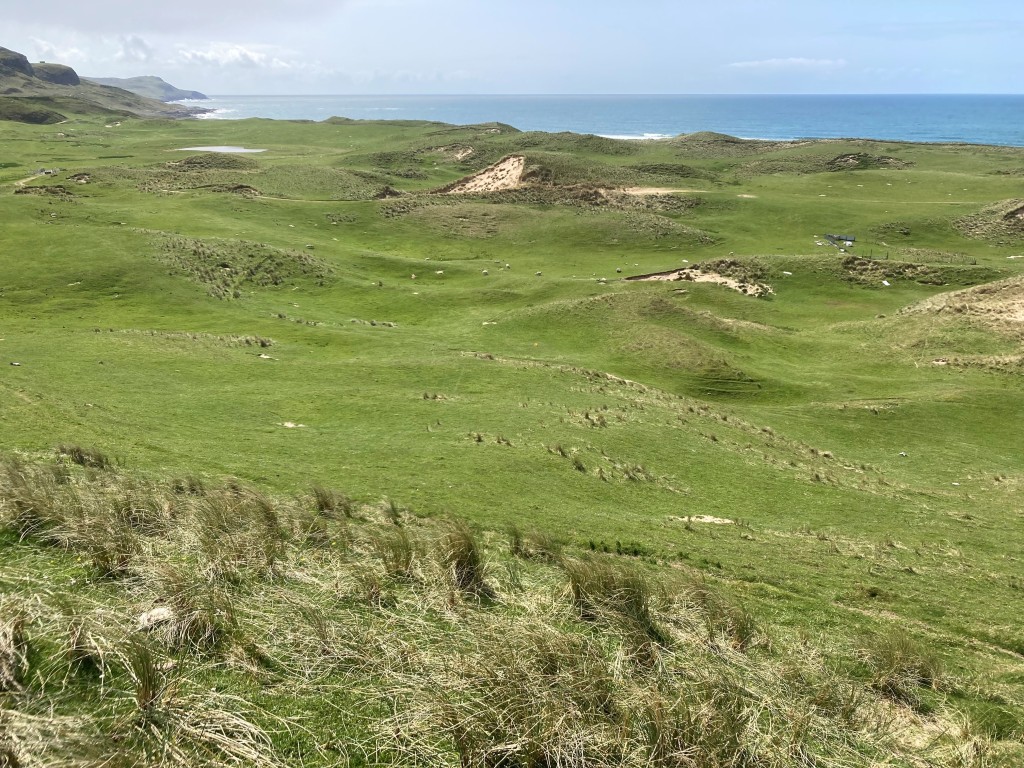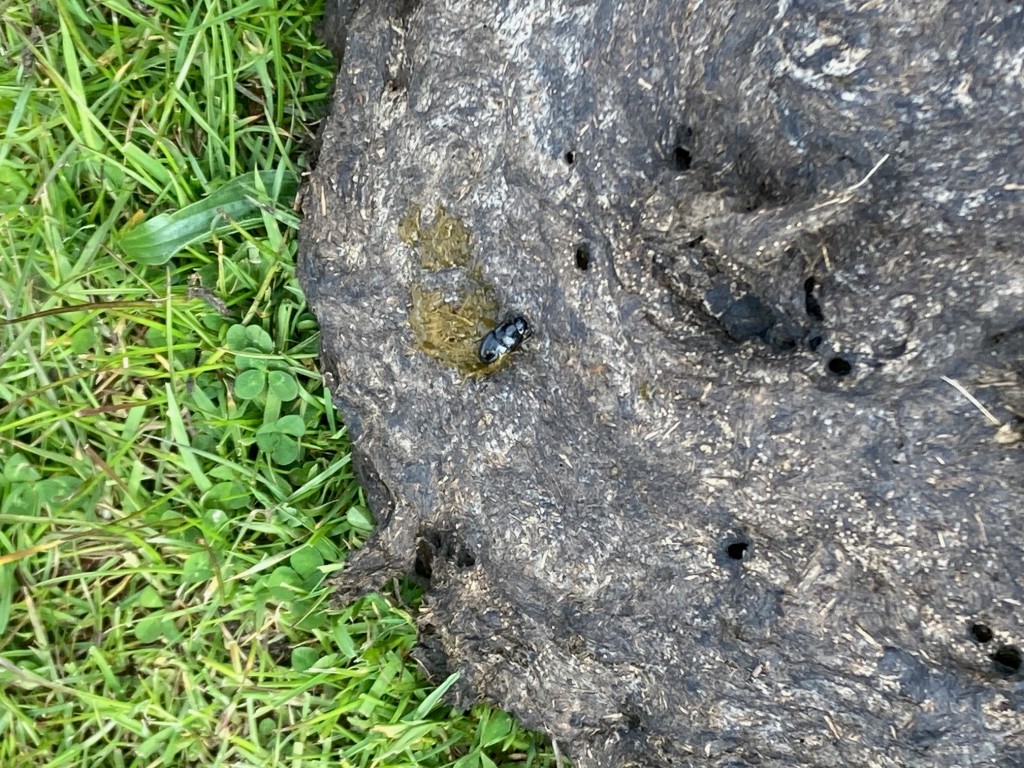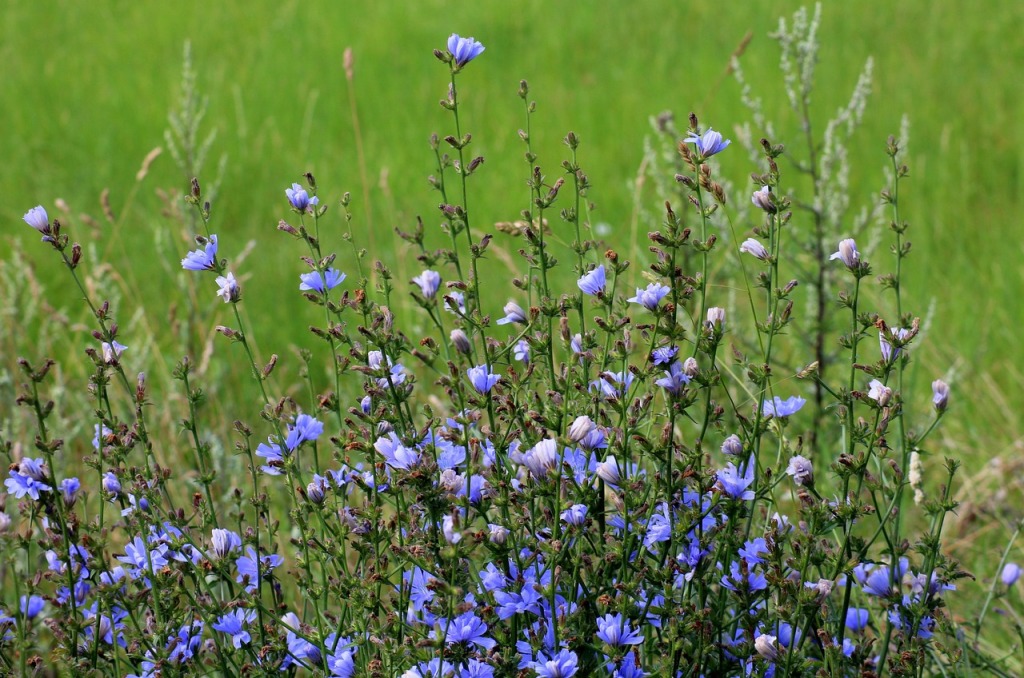In today’s blog, NatureScot’s Ornithology Adviser, Dave Parish gives us an insight into some of the ways farmers are helping to support Scotland’s critically endangered chough.
This is an exciting time of year…chough are now laying their eggs at the start of another crucial breeding season. With its striking red bill, the chough is a dapper, medium-sized member of the crow family (hence its proper name, the red-billed chough). The population in Scotland is precarious by any definition with around just 50 pairs left, all confined to the islands of Islay and Colonsay. This means that each breeding season, and each chick successfully raised, is vital to the future of this species.

Choughs usually lay between three and five eggs in a scruffy-looking, large nest made of twigs, often built on top of some kind of large platform. These can be in cracks in cliff faces and the like, or in farm buildings. In some circumstances they will take to nest boxes, but this is not a good idea as the confined space becomes messy with faeces and can cause health problems for the chicks. Farmers in appropriate locations can receive grant funding through the Agri-Environment Climate Scheme to install chough nest shelters, which comprise a large, open nesting platform in the roof space of an appropriate outbuilding. These should give plenty of room for the chicks to grow and move around as they flex their muscles in preparation for flight, and – not to put too fine a point on it – allow them to poo over the edge and so keep the nest relatively clean.

Choughs are dependent upon a relatively low-intensity type of agriculture, where cattle and sheep graze grass fields and the coastal dune systems around the islands for most of the year. This provides the choughs with the preferred short grass in which they search for invertebrates – especially those associated with cow dung. But unfortunately, cow dung isn’t what it used to be. There are fewer cattle on the islands now than in the past, and they are often treated with drugs to tackle potential parasites, drugs which often persist in the dung and deter or kill the beetles and flies that would normally call the dung home, leaving the birds little to eat. This and other agricultural changes mean that young choughs in particular find it hard to find enough food to survive.

There are ways to help minimise the need for drug treatments, and to check whether livestock need drugs before they are administered. The local vet should be able to advise on this or there are resources online that might help, like Dung Beetles for Farmers. For example, adding chicory and other species into the grass sward at reseeding time, which have anti-parasitic properties and additional fibre, could reduce the need for treatments and help make swards more resilient in the face of changing weather conditions. Similarly, carrying out faecal worm egg counts or simply monitoring body condition closely, can all help identify whether intervention with drugs is needed. There are many other actions that could reduce the reliance on drugs and therefore boost dung-invertebrate numbers (and reduce farm costs), and so provide vital food supplies for young choughs and help change the species’ fortunes.

The chough is a protected species – as indeed are all birds during the breeding season – so it is important that they are not disturbed. We are fortunate that choughs in Scotland are very carefully monitored by a group of licenced experts, so in a few months we will know what kind of season it has been and whether the birds have produced lots of chicks. So, keep fingers crossed and watch this space for an update!
Dave Parish is an Ornithology Adviser at NatureScot and specialises in farmland birds, waders and game birds.

You must be logged in to post a comment.